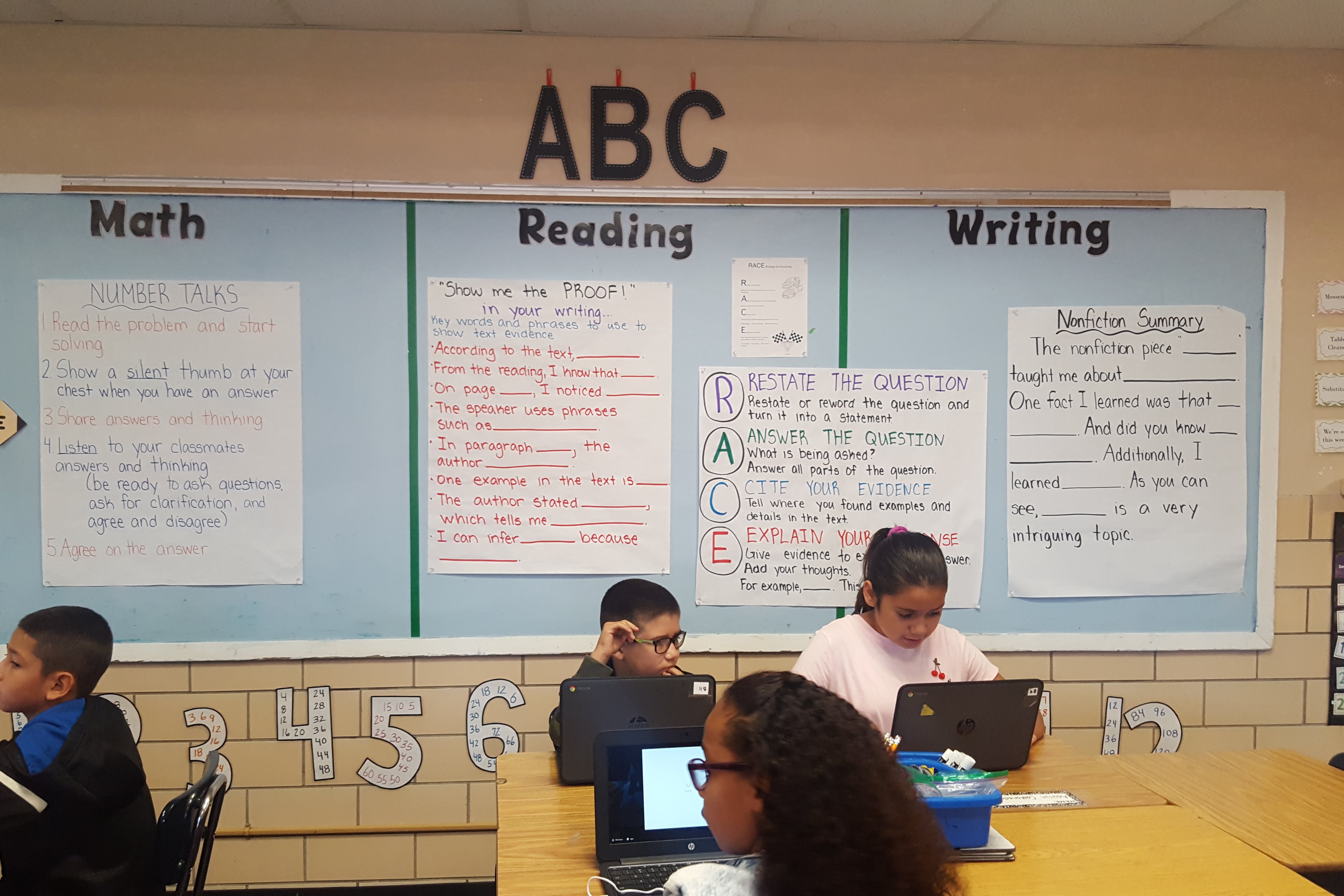Most Colorado school districts saw gains from last year in the percentage of students in grades 3-8 who are meeting expectations on their math exams.
That’s according to school and district level test results released Thursday by the Colorado Department of Education. The results provide more detail on the statewide performance data released last week.
Statewide, Colorado saw continued improvement in math results. Data from the Colorado Measures of Academic Success tests, or CMAS, given to third through eighth grade students in the state, also showed that students are making gains in literacy, but many students are still not performing as well as they did before the pandemic. The state data also showed that gaps in performance persist for many student subgroups, including students learning English as a new language.
District and school data shows a similar trend, with most districts improving math results, but fewer districts gaining on language arts tests.
Looking at aggregated results across grade levels, 80 of Colorado’s 178 districts had a year-over-year improvement in the percentage of students meeting expectations on language arts tests, and 86 districts had a decrease. Some did not have enough data.
Weld Re-8 in Fort Lupton was one of the larger districts that had a significant increase in language arts performance. In 2024, Weld Re-8 had 29.6% of its students meeting expectations on language arts tests, up from 24.3% in 2023.
Districts including Cherry Creek, 27J in Brighton, and Adams 14 had fewer students meeting expectations on English language arts tests compared with last year. Adams 14, a district that has long been on state watchlists for low student achievement, also had a smaller aggregate percentage of students meeting expectations on math tests.
Many districts, including Denver, Aurora, Mapleton and Sheridan, had small improvements of less than 1 percentage point in the rate of students meeting or exceeding expectations on language arts tests.
However, for third grade reading scores, districts were more likely to see gains. This year, 73 Colorado districts had more students meeting expectations on third grade reading compared with last year, with just 43 seeing a decrease.
Academy 20, Colorado Springs 11, and District 49, all in Colorado Springs, had among the larger improvements on third grade reading results compared with last year. Other districts with big improvements in language arts results include the Boulder, Thompson, and Jeffco school districts.
The data also shows that 54 school districts have a higher percentage of third graders meeting language arts expectations than they did in 2019, before the pandemic. That includes the Douglas County, Mesa County Valley District 51, and Jeffco school districts.
Yesenia Robles is a reporter for Chalkbeat Colorado covering K-12 school districts and multilingual education. Contact Yesenia at yrobles@chalkbeat.org.






